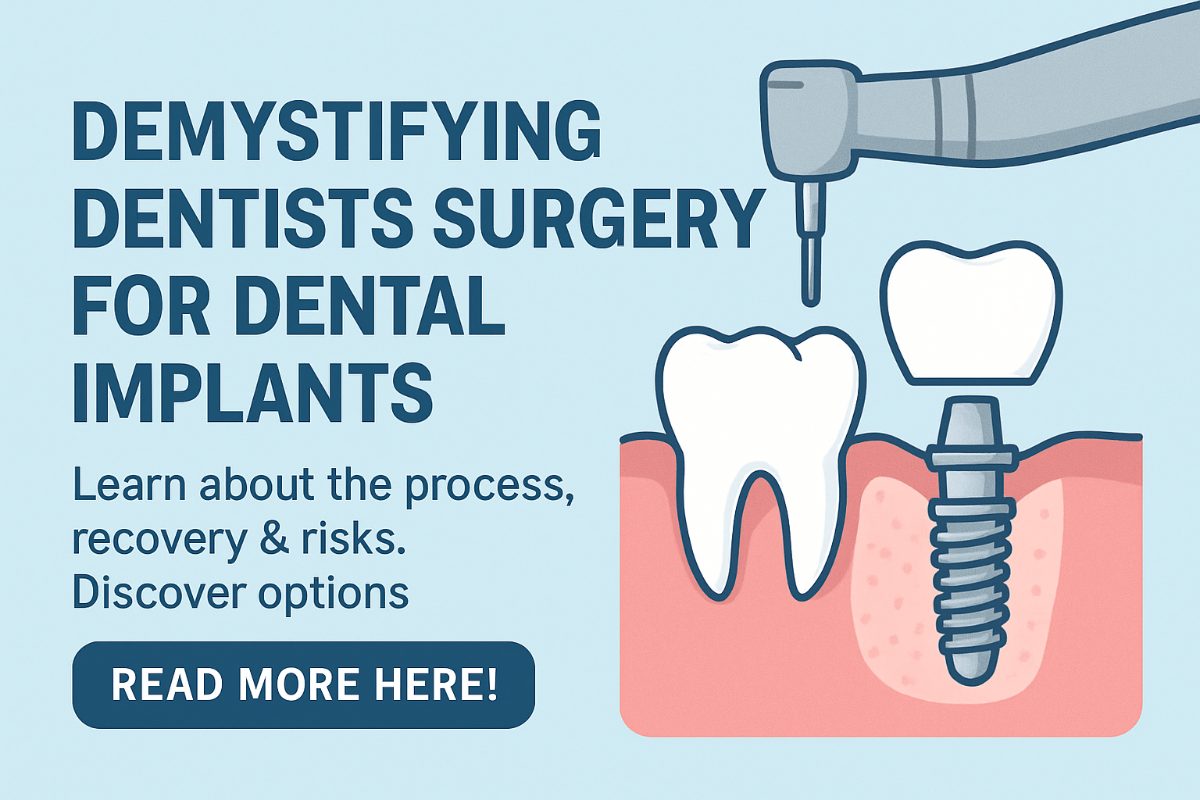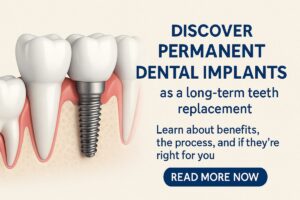Getting dental implants is a common path to restore missing teeth, but the phrase “dentists surgery” can make people nervous. This article explains, in plain language, what a dentists surgery for dental implants typically involves, why each step matters, and how to prepare. You’ll learn what happens before, during, and after the procedure, common risks, special options for people with low bone, and what to expect if you travel to see a specialist.
What “dentists surgery” means for dental implants
A dentists surgery for implants is the surgical placement of metal posts (usually titanium) into the jawbone. These posts act like tooth roots. Sometimes surgeons also add bone grafts or lift the sinus to create enough bone. After the post heals, a temporary or final tooth is attached. The main goals are stable chewing, improved appearance, and long-term function.
Before surgery: evaluation and planning
Medical and dental exam
Your dentist or surgeon will review your medical history, current medications, and any chronic conditions. They’ll check your mouth for infections, gum disease, and the health of nearby teeth. This helps reduce risks and decide if any treatments are needed before surgery.
Imaging and digital planning
CT scans and intraoral scans map your jaw and show bone levels and vital nerves. Many practices use digital planning to place implants virtually before the operation. This improves accuracy and helps predict if you’ll need grafts or special implant types.
Consent, expectations, and scheduling
You’ll go over risks, timelines, anesthesia choices, and aftercare. The team will explain when temporary teeth can be placed and how many visits are needed. Expect clear pre-op instructions like fasting rules and which medications to stop.
The day of the dentists surgery: step-by-step
Check-in and prep
Arrive on time for pre-op checks. Staff will confirm your history and start IV access if you chose IV sedation. Local anesthetic is used for nearly all implant surgeries. Dress comfortably and arrange for someone to drive you home if you had sedation.
The surgical steps
Most surgeries begin with making a small gum opening to expose the bone. The surgeon drills a precise hole, places the implant post, and may add bone graft material or perform a sinus lift if needed. If conditions allow, a temporary crown or bridge can be attached the same day.
Anesthesia and comfort during surgery
Local anesthesia numbs the area. IV sedation relaxes you and often produces partial memory loss of the procedure. General anesthesia is rare and used only for complex cases. Ask your surgeon which option fits your health and anxiety level.
First 24–72 hours: immediate recovery
Expect mild-to-moderate swelling and some bleeding. Use cold packs for the first 24 hours, eat soft foods, and sleep with your head elevated. Take prescribed pain meds and antibiotics as directed. Avoid smoking and heavy exercise. Most people handle this period at home with rest and simple self-care.
First weeks to months: healing and follow-up
Osseointegration is the process where bone fuses to the implant and usually takes 2–6 months depending on the site and bone quality. You’ll have follow-up visits to check healing and remove sutures. Once integrated, temporary teeth are replaced with final crowns, bridges, or full‑arch prostheses. Regular oral hygiene and checkups are essential.
Common risks and warning signs
Most implants heal well, but complications can occur. Watch for increasing pain, heavy bleeding, fever, pus, or a loose implant. Nerve changes like numbness or tingling that persist need urgent attention. Contact your dentist or surgeon right away if you see these signs.
Special situations: low bone and complex implants
If you’ve been told you have “no bone,” options still exist. Bone grafting can rebuild lost bone. For very limited bone, alternative implant types—such as zygomatic, pterygoid, transsinus, and subperiosteal implants—may be used. These complex approaches often require specialists with advanced surgical training.
Traveling for surgery and same‑day planning
If you’re coming from out of town, many practices schedule a brief pre-op consult a day before surgery and discharge you the day after. Local dentists can handle routine postop checks while you return home. Final fit and verification usually occur months later. When planning travel, arrange local care for immediate follow-ups and clear instructions for emergency contact.
About choosing a specialist
Board-certified implant specialists often manage the most complex cases and offer more treatment options. Look for training, published experience, and patient outcomes when choosing who will do your dentists surgery in Ohio.
Our practice approach
Dr. Michael Fioritto is one of about nine board‑certified implant specialists in Ohio. We place implants for patients told they have no bone using zygomatic, pterygoid, transsinus, and subperiosteal implants. Our full digital workflow uses facial, intraoral, and photogrammetry scanners to plan and deliver precise results. Dr. Fioritto also teaches local dentists and labs the All‑on‑X digital workflow. Many patients travel from out of state—often meeting Dr. Fioritto the day before surgery and returning home the next day, with their referring dentist providing local postop care and a later final check. We offer free consultations and CT scans to help you understand your options.
Final thoughts and next steps
Bring a list of medications, your medical history, and any recent imaging to your consultation. Mentally prepare by arranging a ride home, time off work, and soft foods. If you’re considering dentists surgery in Ohio and want expert options or have been told you have no bone, book a free consultation and CT scan to learn what’s possible and make a clear plan.






